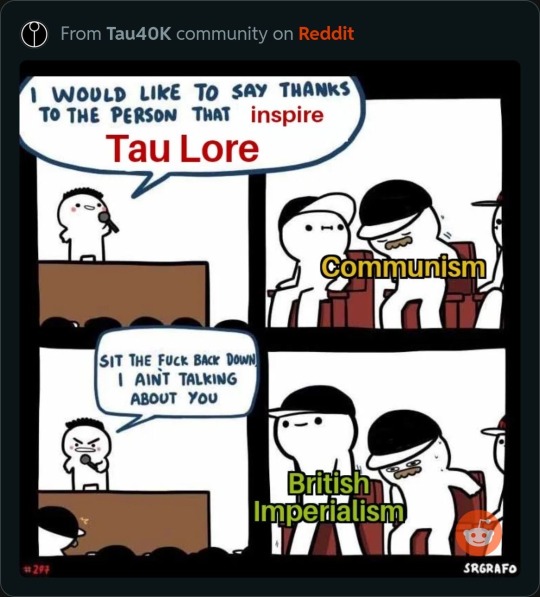#company in India
Video
youtube
Pay-Per-Click Marketing
#ppc#ppc campaign#PayperClickServices#payperclick#internet marketing#webdesign#seocompany#marketingcompany#company in India
4 notes
·
View notes
Text
Formation of a company in India as a foreigner
Forming a company in India as a foreigner involves navigating a complex yet rewarding process. Foreign entrepreneurs keen on establishing a business in the vibrant Indian market must adhere to specific legal procedures and regulations. From obtaining the necessary approvals from government authorities to adhering to foreign direct investment guidelines, the formation journey demands a comprehensive understanding of India's corporate landscape. Factors such as selecting the right business structure, appointing directors, and fulfilling statutory requirements contribute to a successful company formation. Despite the intricacies, the potential for growth and the vast consumer base make India an enticing destination for foreign investors looking to establish their business footprint in the country.
0 notes
Text
#deuglo#progressive web apps#app development services#web app development#bangalore#company in india
0 notes
Text
ISO Certification Online Registration
It is very essential that every company registers for ISO certification because all companies must abide by a certain rule which will standardize the values that are safe for the employees and the customers. The registration office is not very difficult if easy registrars are accounted for. Our company can assist you in getting your ISO registration very quickly.
Follow these simple steps to get ISO Certificate in India
Step 1: Visit the ISO Certificate Registration Website
Step2: Fill all the details on ISO Certification Registration Form
Step3: Make the online payment for your ISO Registration Application
Step4: One of the ISO registration executives will verify your documents and process your ISO Registration Certification official work
Step5: In a few working days you will receive your ISO certificate in your registered email address.
#iso certificate online#Iso registration#scope for orgnisation#company in india#digital painting#digitalmarketing
0 notes
Text
Götheborg of Sweden sailing between Gothenburg and Helsingborg, 2022
Source
870 notes
·
View notes
Text
What do the Fifth House actually do?
Sure, yes, ghosts and tradition and the Heart of the Emperor, and Watchers Over the River - but none of those things give you the kind of assets that mean you can dress your cavalier in a coat that "probably cost more than the Ninth House had in its coffers" for a dinner party.
It's made clear very early on that the Fifth are a power to be reckoned with. When they first receive the letter about the Lyctoral pilgrimage, Gideon assumes it would be on the Third or Fifth. Harrow, meanwhile, has frequently-repeated anxieties about the Ninth being subsumed by the Third or Fifth, to the point that she worries that the anniversary party invitation may be an attempt to wipe out the other Houses. Teacher describes the Fifth's relationship with the Fourth as "hegemonic". The Fifth loom so large in the cultural imagination, they even inform the name of the made up porn magazine that Gideon offers to Crux.
The links between the Third and the Fifth that both Gideon and Harrow make seem to reflect both the fact that these two Houses have particular power and influence, but also that they frequently cooperate. Judith writes about the close cooperation of the Second, Third, and Fifth, a relationship which becomes a source of tension as the scions seek to establish authority after the Fifth are murdered. Judith says:
“The Fifth are dead. I take authority for the Fifth. I say we need military intervention, and we need it right now. As the highest-ranked Cohort officer present, that decision falls to me.” “A Cohort captain,” said Naberius, “don’t rank higher than a Third official.” “I’m very much afraid that it does, Tern.” “Prince Tern, if you please,” said Ianthe.
Which makes it sound as though Abigail might technically have been considered the highest ranking person at Canaan House (likely because she was head of her House and not an heir in waiting like Judith or Coronabeth), and that following her death there is some question as to whether the Second or the Third should take control, but notably no suggestion that anyone else might.
We know what the Second do: they are the leaders of the Cohort and the Bureau, the military and intelligence that forms the core of imperial expansion. Most of the information that we get about the other Houses talks only about their cultural or ritual roles in the empire - we get very little in the way of gritty details of what happens outside of the Dominicus system.
We know a little bit about what the Third does - according to Tor they are cultural trendsetters and players in soft power, but the one detail we get in GTN itself is revealing: when Gideon imagines her glorious future in the Cohort, one of the assignments she considers boring is the prospect of being "in some foreign city babysitting some Third governor." Which makes it sound rather like the Second are conquering the planets and the Third are then running them. But the books are even lighter in details about what the Fifth do, beyond ghosts and manners.
However, there is one suggestive detail: an important topic in HTN is stele travel - the necromantic FTL used by the Nine Houses. And Mercymorn, in describing a stele, specifically states that Fifth House adepts are required for their construction. Which rather makes it sound like the Fifth have a monopoly on the manufacturer of the technology required for FTL travel. Now that in and of itself could be the basis of their enormous wealth - selling aerospace tech to an ever expansionist military is probably quite lucrative.
But there's another element of House imperialism that only gets mentioned in passing that doesn't seem to be entirely accounted for, which Judith describes in As Yet Unsent:
"Their other line of attack is the business contracts. They claim that the services asked of them by the Emperor were set down in lifetime contracts by previous generations, who assumed the contracts would be terminated upon the Emperor’s death."
There are obviously some unanswered questions about the imperialist project of the Nine Houses - both Augustine and Coronabeth question quite why it works the way it does - but from the above it sounds like in many respects it functions exactly as you would expect an empire to: as a vehicle for the exploitation of others' resources.
Perhaps the Cohort themselves administer these business contracts. Perhaps they fall under the purview of the Third House planetary governors. But if you're exporting resources from the living planets of your empire to the mostly desolate planets of the Dominicus system, you're going to need some FTL ships and a whole lot of bureaucracy.
And if there's one other detail that we get about the Fifth, it's that there is something significant about the political power of their bureaucracy. As Judith puts it: "Quinn himself is a Fifth House bureaucrat with all that entails."
Are the Second, Third, and Fifth so close and so powerful because they form the bedrock of the empire: the conquest, control, and exploitation of planets beyond the Dominicus system?
#the locked tomb#tlt#abigail pent#magnus quinn#judith deuteros#coronabeth tridentarius#the fifth house#the third house#the second house#We regret to inform you that spreadsheets dad is maybe running the necromantic East India Company
1K notes
·
View notes
Text
Tbf.. at least they acknowledged their part
#talkin#tik tok#twinings tea#thomas twining#slavery#war crimes#east india company#royal african company#youthpastorryan
106 notes
·
View notes
Text

#seriously#it’s British imperialism plus India’s caste system#there is Japanese influence too with spheres of expansion and the armor style#but it’s a British company first and foremost l#tau#t’au#tau empire#t’au empire#wh40k#wh40000
279 notes
·
View notes
Text
Secondo: Pirates of the Caribbean really introduced an eldritch octopus man that kills indiscriminately and torments the souls of the dead for fun as their poster villain, but then you watch the movie and it’s like “oh, actually, the worst villain in this movie is a small white British man who acts as the herald of capitalism.” Here is a man so heartless he literally cut his own heart out of his chest, but even HE isn’t as evil as the fucking East India Trading Company. That was very very brave and very very accurate of them.
#the East India Trading Company was very evil#pirates of the caribbean#taintposting#shitghosting#ghost#ghost band#incorrect quotes#ghost bc#the band ghost#ghost fandom#ghost posting#secondo emeritus#secondo#papa 2#papa ii#papa emeritus ii
99 notes
·
View notes
Text










Paul and (most of) his audio companions.
#yeah i’m including the eleven#he travelled in the TARDIS for a few episodes in ravenous#never seen a picture with rakhee (bliss)#the one with julie cox is a scan of a tiny tiny photo from the insert of company of friends hence the poor quality#paul mcgann#doctor who#eighth doctor#8th doctor#big finish#india fisher#conrad westmaas#julie cox#sheridan smith#alex kingston#ruth bradley#sonny mcgann#emma campbell jones#hattie morahan#nicola walker#mark bonnar#rebecca root#tom price#mcgann monday#nice to see paul mock-strangles his kids as well as everyone else!
119 notes
·
View notes
Text

#this is a semi shitpost please don't mistake it for me trying to claim the work of a massive company is peak activism#but I really enjoyed this movie#well the bits I could hear anyway sometimes being hard of hearing with no subtitles is a real struggle#across the spiderverse#atsv#marvel#pavitr prabhakar#spider man india#hobie brown#spider punk#gwen stacy#spider woman
115 notes
·
View notes
Text
Start a Dropshipping Business in India by Foreigners
Introduction
The e-commerce industry has grown tremendously with the shift to online shopping for most products. Dropshipping has become a popular business model for entrepreneurs venturing into the e-commerce industry. This blog will provide your the information on how to start a droppshipping business in India with benefits, documents required, and process.
What is Dropshipping in India?
Dropshipping is a retail business model in which the seller does not keep the products in stock. Instead, when an order is placed, the seller purchases the product from a third-party supplier or manufacturer, who then ships it directly to the customer. This eliminates the need for the seller to handle the product or store inventory.
The Process to Start a Dropshipping Business in India
The following is the process to start a dropshipping business in India:
1. Choose the supplier
Choosing a supplier for your business is an important task that requires careful consideration. The supplier you select will have a significant impact on the growth and success of your business. Some key points to keep in mind when selecting a supplier:
The supplier should be trustworthy.
The supplier matches your business needs.
The supplier should deliver you quality products & services.
The supplier should consider customer satisfaction.
2. Choose your selling products
When starting a dropshipping business in India it is important to choose the right products to sell. After you have found a reliable supplier, browse their products and speak with them to learn about their best-selling items. Do some market research and get good ideas & suggestions from top-level websites like Flipcart, Amazon and others.
3. Get your GSTIN
When conducting business transactions as a registered company, it is important to provide your supplier with your GSTIN (Goods and Services Tax Identification Number). This allows you to claim Input Tax Credit (ITC) later on However, if you are an individual starting droppshipping business, you can still operate without GSTIN. It is an important to clarify the GST requirements before engaging in business with any supplier to avoid potential legal issues in the future.
4. Create an online store
When starting a dropshipping business, it is important to create a website for your store to showcase your products to customers. This involves purchasing a domain name and building a strong technical foundation to manage your store effectively. Additionally, it is crucial to offer multiple payment methods to cater for customer preferences.
5. List your products
To list your products effectively, provide customers with all the necessary and relevant product information. Request multiple product images from your supplier to increase your options and chances of selling the products. Along with listing conduct market research and gather ideas and suggestions from reputable sources like Flipcart, Amazon and other top-level websites.
Foreign Company Registration in India allows international businesses to legally establish and operate within the country. It provides access to a large consumer market, diverse sectors, and favorable investment conditions. The process involves fulfilling legal obligations, obtaining approvals, and complying with regulations. Professional guidance is recommended to navigate complex procedures and adapt to local practices.
What are the document requirements for Starting a Dropshipping Business in India?
To start a dropshipping business, there are certain documents required. These include:
Photograph of all the Directors and shareholders.
PAN Card of all the Indian Directors and shareholders.
Apostille ID Proof of all the Directors (driving license/ passport/ voter ID).
Electricity bill or other utility bill for the address proof of the Registered Office.
Summary
Droppshipping business in India offers incredible opportunities, a large market space for experimentation, and lower risk. It is a business model where products are not kept in the store, and the seller purchases products directly from the third party and ships them directly to the customer. To start dropshipping business in India, you need to follow the steps given the above blog along with the documents required.
0 notes
Text





INT: How much singing and composing did you witness [in India]?
PS: I didn't see much, because they did that kind of thing mostly at night. So I only ever saw or was part of that one session that I photographed. I was walking back to my tent late one afternoon before dinner, and I just heard John and Paul singing from behind the trees. And I walked over and saw what they were doing, and I went and got my camera, which is the only time I took my camera out on purpose. So I took a few shots through the fence, then I walked through and just sat down, with Paul and John side by side, and just hung out. Paul had a piece of paper with the words, "Ob-la-di, Ob-la-da, oh, how the life goes on," and it was on the step beneath him. The first picture in the book is the shot of him looking down and his hand is off the guitar, and he's reading the words, which he didn't have memorized yet. And they just played with it for about five minutes, having a wonderful time fooling around. It was such fun, I mean them having so much fun. When I first sat down, they were actually just playing bits and fragments of their older songs.
INT: Previously recorded material?
PS: Yeah, like Michelle and Eleanor Rigby. Just musically meandering. Then Paul started looking down at the piece of paper and I took a picture.
INT: Was George around?
PS: No. But Ringo was siting there with his leg crossed, a cigarette in his hand. So after they had played Ob-La-Di, Ob-la-Da over and over again, they stopped for a breather, and that's when Paul looked up at me, smiled, and with this really wonderful twinkle in his eye, said, "That's all there is so far, we haven't got the words yet." So that was the only time I experienced it.
INT: That's interesting because Lennon had stated in many interviews that he and McCartney had really stopped composing together in late '64 or early '65, but Paul said in his recent book that they actually composed together right to the end. So what you witnessed reinforces Paul's version.
PS: That is interesting. And they were having so much fun together. There's no question about it.
— Interview with Paul Saltzman (Beatlology Magazine, January/February 2001 Edition)
#The Beatles#John Lennon#Paul McCartney#Ringo Starr#Paul Saltzman#1968#India#(I remember the first time reading about the boys in India)#(And I remember just reading endlessly about how negative it all was and that it was the turning point/they were all doing their own thing)#(That J & P were barely speaking to each other)#(While I also don’t think it was a 100% happy/celebratory time for them)#(I think it’s important to note that their relationship wasn’t completely fractured during this time)#(They were still having fun in each other’s company)#(As always - the truth is usually somewhere in the middle)
221 notes
·
View notes
Text
obviously the UK is no better lol but what i learnt from visiting a handful of museums in amsterdam is that the dutch are very very shameless about their colonial history
#.txt#it was literally like! we love the DUTCH GOLDEN AGE we love the DUTCH EAST INDIA COMPANY we love the NEW WORLD
77 notes
·
View notes
Text
[T]he Dutch Republic, like its successor the Kingdom of the Netherlands, [...] throughout the early modern period had an advanced maritime [trading, exports] and (financial) service [banking, insurance] sector. Moreover, Dutch involvement in Atlantic slavery stretched over two and a half centuries. [...] Carefully estimating the scope of all the activities involved in moving, processing and retailing the goods derived from the forced labour performed by the enslaved in the Atlantic world [...] [shows] more clearly in what ways the gains from slavery percolated through the Dutch economy. [...] [This web] connected them [...] to the enslaved in Suriname and other Dutch colonies, as well as in non-Dutch colonies such as Saint Domingue [Haiti], which was one of the main suppliers of slave-produced goods to the Dutch economy until the enslaved revolted in 1791 and brought an end to the trade. [...] A significant part of the eighteenth-century Dutch elite was actively engaged in financing, insuring, organising and enabling the slave system, and drew much wealth from it. [...] [A] staggering 19% (expressed in value) of the Dutch Republic's trade in 1770 consisted of Atlantic slave-produced goods such as sugar, coffee, or indigo [...].
---
One point that deserves considerable emphasis is that [this slave-based Dutch wealth] [...] did not just depend on the increasing output of the Dutch Atlantic slave colonies. By 1770, the Dutch imported over fl.8 million worth of sugar and coffee from French ports. [...] [T]hese [...] routes successfully linked the Dutch trade sector to the massive expansion of slavery in Saint Domingue [the French colony of Haiti], which continued until the early 1790s when the revolution of the enslaved on the French part of that island ended slavery.
Before that time, Dutch sugar mills processed tens of millions of pounds of sugar from the French Caribbean, which were then exported over the Rhine and through the Sound to the German and Eastern European ‘slavery hinterlands’.
---
Coffee and indigo flowed through the Dutch Republic via the same trans-imperial routes, while the Dutch also imported tobacco produced by slaves in the British colonies, [and] gold and tobacco produced [by slaves] in Brazil [...]. The value of all the different components of slave-based trade combined amounted to a sum of fl.57.3 million, more than 23% of all the Dutch trade in 1770. [...] However, trade statistics alone cannot answer the question about the weight of this sector within the economy. [...] 1770 was a peak year for the issuing of new plantation loans [...] [T]he main processing industry that was fully based on slave-produced goods was the Holland-based sugar industry [...]. It has been estimated that in 1770 Amsterdam alone housed 110 refineries, out of a total of 150 refineries in the province of Holland. These processed approximately 50 million pounds of raw sugar per year, employing over 4,000 workers. [...] [I]n the four decades from 1738 to 1779, the slave-based contribution to GDP alone grew by fl.20.5 million, thus contributing almost 40% of all growth generated in the economy of Holland in this period. [...]
---
These [slave-based Dutch commodity] chains ran from [the plantation itself, through maritime trade, through commodity processing sites like sugar refineries, through export of these goods] [...] and from there to European metropoles and hinterlands that in the eighteenth century became mass consumers of slave-produced goods such as sugar and coffee. These chains tied the Dutch economy to slave-based production in Suriname and other Dutch colonies, but also to the plantation complexes of other European powers, most crucially the French in Saint Domingue [Haiti], as the Dutch became major importers and processers of French coffee and sugar that they then redistributed to Northern and Central Europe. [...]
The explosive growth of production on slave plantations in the Dutch Guianas, combined with the international boom in coffee and sugar consumption, ensured that consistently high proportions (19% in 1770) of commodities entering and exiting Dutch harbors were produced on Atlantic slave plantations. [...] The Dutch economy profited from this Atlantic boom both as direct supplier of slave-produced goods [from slave plantations in the Dutch Guianas, from Dutch processing of sugar from slave plantations in French Haiti] and as intermediary [physically exporting sugar and coffee] between the Atlantic slave complexes of other European powers and the Northern and Central European hinterland.
---
Text above by: Pepijn Brandon and Ulbe Bosma. "Slavery and the Dutch economy, 1750-1800". Slavery & Abolition Volume 42, Issue 1. 2021. [Text within brackets added by me for clarity. Bold emphasis and some paragraph breaks/contractions added by me. Presented here for commentary, teaching, criticism purposes.]
#abolition#these authors lead by pointing out there is general lack of discussion on which metrics or data to use to demonstrate#extent of slaverys contribution to dutch metropolitan wealth when compared to extensive research#on how british slavery profits established infrastructure textiles banking and industrialisation at home domestically in england#so that rather than only considering direct blatant dutch slavery in guiana caribbean etc must also look at metropolitan business in europe#in this same issue another similar article looks at specifically dutch exporting of slave based coffee#and the previously unheralded importance of the dutch export businesses to establishing coffee mass consumption in europe#via shipment to germany#which ties the expansion of french haiti slavery to dutch businesses acting as intermediary by popularizing coffee in europe#which invokes the concept mentioned here as slavery hinterlands#and this just atlantic lets not forget dutch wealth from east india company and cinnamon and srilanka etc#and then in following decades the immense dutch wealth and power in java
24 notes
·
View notes
Text
An inaccurate telling of American History Part 1
#talkin#ace vane#american history#american revolution#boston tea party#samuel adams#ben franklin#east india company
77 notes
·
View notes